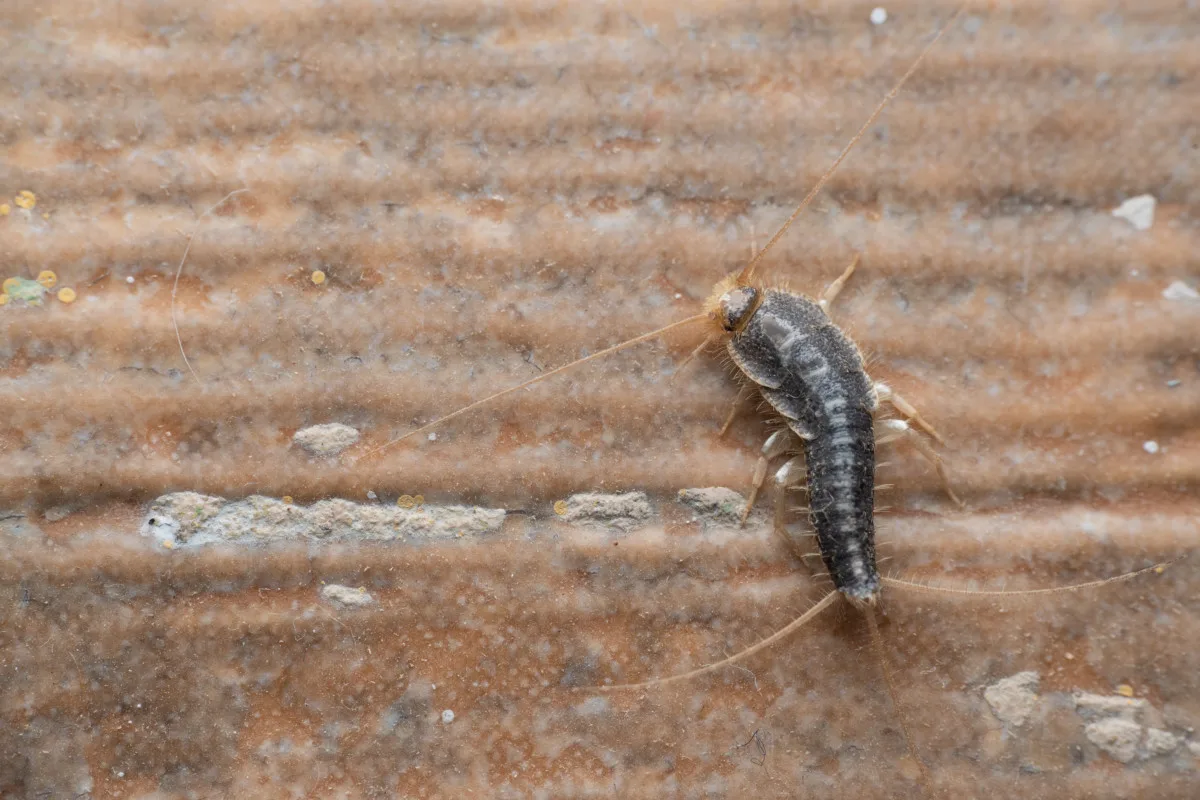
Lurking in the dark and damp underbellies of the home, silverfish are six-legged scaly insects that only come out at night.
Perhaps you’ve gone into your kitchen for a midnight snack and caught sight of one of these elusive creatures skittering under your fridge just after you’ve flicked on the light?
We’ve all been there – jump-scared by a bug.
Unlike false ladybugs, at least silverfish don’t bite. Though they are fairly harmless scavengers, silverfish will eat away at paper, glues, starched fabrics, and other household goods. In large enough infestations, silverfish can cause significant damage to your belongings.
What are Silverfish?
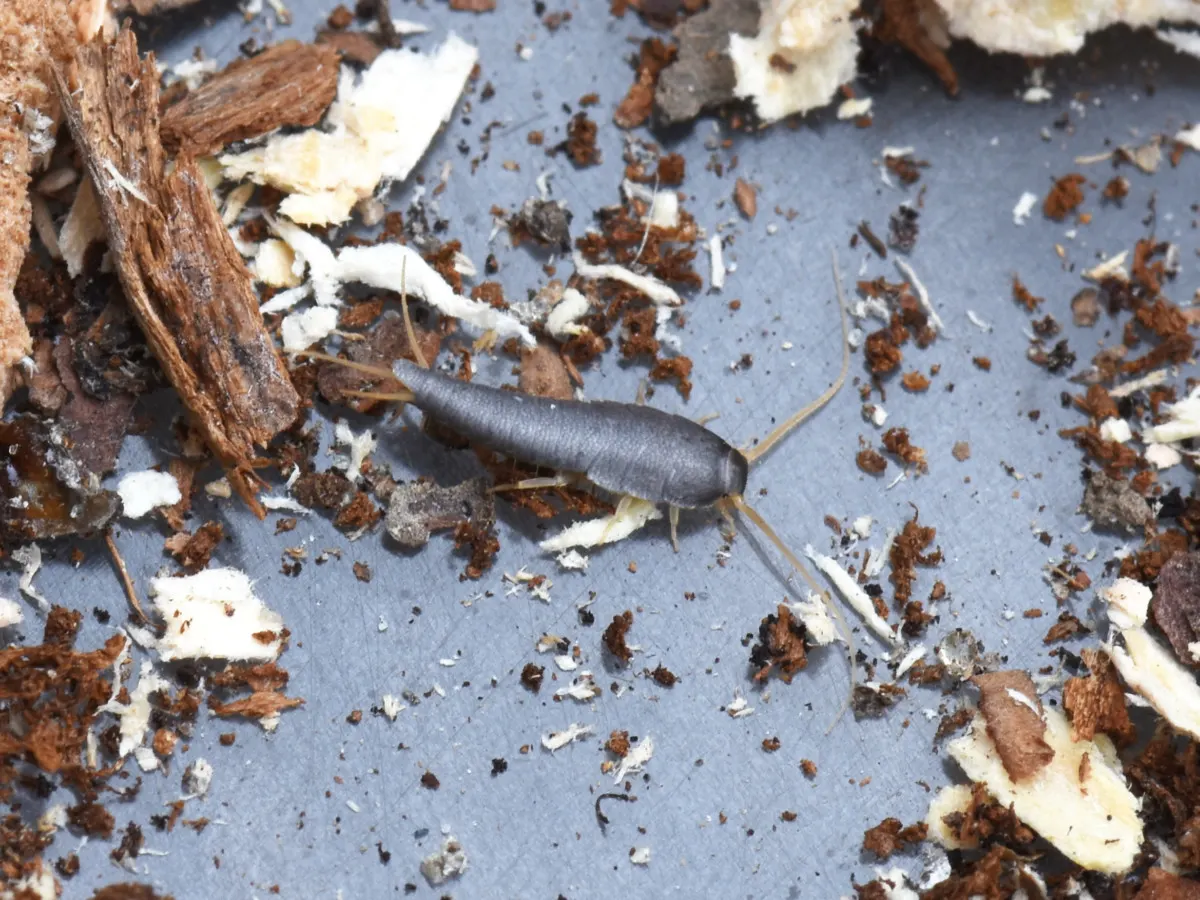
Silverfish (Lepisma saccharinum) are wingless insects that reside on every continent of the world.
Named for their fish-like movements and appearance, silverfish have flat, elongated, and tapered bodies that are covered in silvery scales that give off a metallic sheen in the light.
Adult silverfish can reach an inch in length and have two long and slender antennas at the head and a trio of bristles at the rear.
A shy, nocturnal insect that avoids light, silverfish wiggle their bodies back and forth when they run and can move surprisingly fast.
In moist environments, silverfish can reproduce quickly. Females will continuously lay eggs in cracks and crevices of the home as soon as they reach adulthood. The eggs will hatch in roughly 3 weeks. The little newborn silverfishes, smaller and whitish in color, will mature into fully grown, silver-scaled adults in just 4 to 6 weeks.
Silverfish can live a long time – from 2 to 8 years – and can survive for around a year without food.
Silverfish Hiding Spots
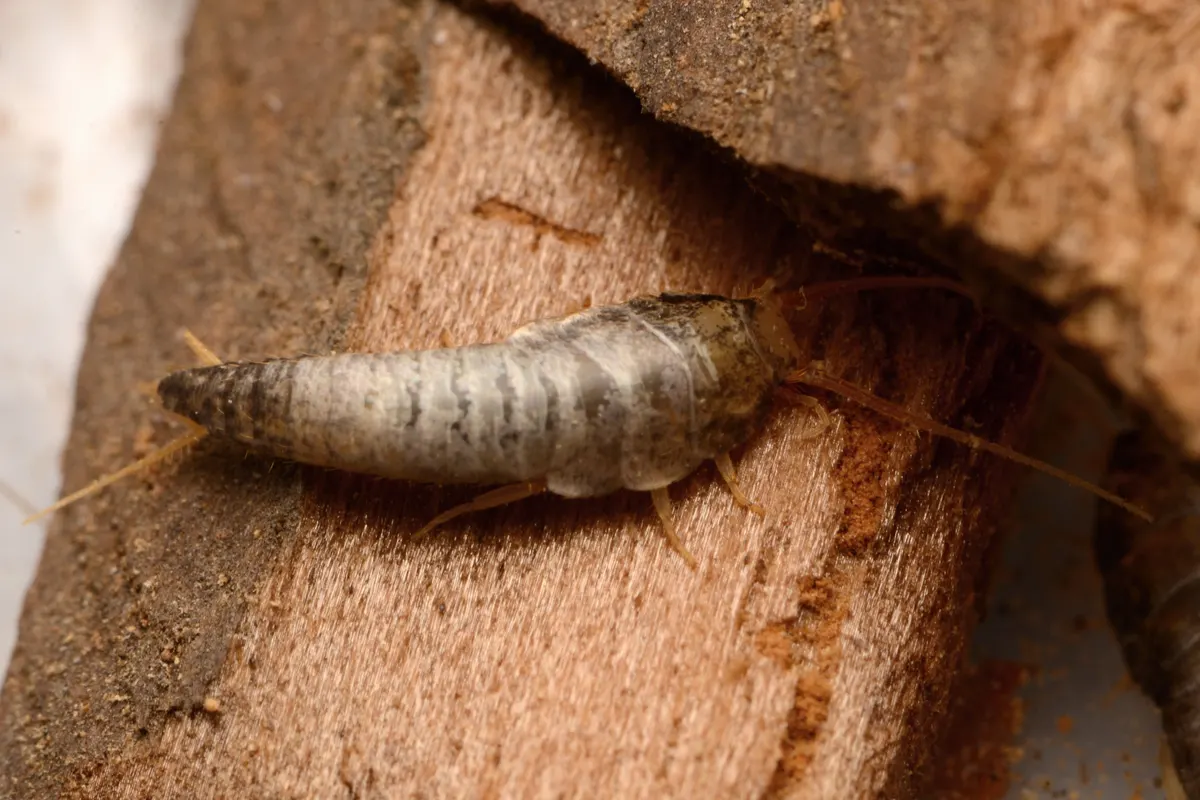
Silverfish can be found almost anywhere in the home but are most commonly sighted in damp, dark, and cool places.
They usually gain entry into the house by hitchhiking on furniture, books, and boxes that were stored outside.
Basements, laundry rooms, and attics are preferred silverfish habitats. They are attracted to moisture around sinks, bathtubs, and other plumbing fixtures, where they will follow pipelines for easy access to other floors of the house.
Silverfish hide out during the day in tiny nooks and crannies – behind baseboards, door frames, and windows, in subfloors and wall voids, and inside closets and bookcases.
At nighttime, they will emerge from their hidey-holes and forage for food.
Silverfish Have a High Carb Diet
In the wild, silverfish live under the shelter of rocks and beneath the bark of trees, close to streams, creeks, and other moist places. Here they eat all sorts of debris – dead plants, leaves, brush, and wet wood.
The silverfish diet consists of all things carbohydrates and proteins. Polysaccharides like cellulose and starch are abundant in nature and are the main food source of silverfish.
The home is also a rich source of starchy sugars and carbs, in some of the most unlikely places.
Silverfish will consume typical pantry foods like flour, rolled oats, sugar, and cereal grains. But they will also slowly chew away at non-food items that contain cellulose and starch.
This includes paper products such as cardboard, photographs, and the pages of books.

They enjoy the starches in glues, like those in wallpaper paste, book bindings, and carpets.
Starched shirts, linens, silk, cotton, and other natural fibers are a tasty treat to silverfish. When they gorge themselves on fabrics, they will leave behind tiny holes in their wake.
Silverfish are also attracted to the still-moist building materials of new homes, particularly green lumber and fresh plaster.
As part of nature’s cleaning crew, silverfish will also devour dead insects, dust, hair, dead skin, dandruff, and mold.
7 Natural Ways to Manage Silverfish in the Home
1. Keep Things Clean
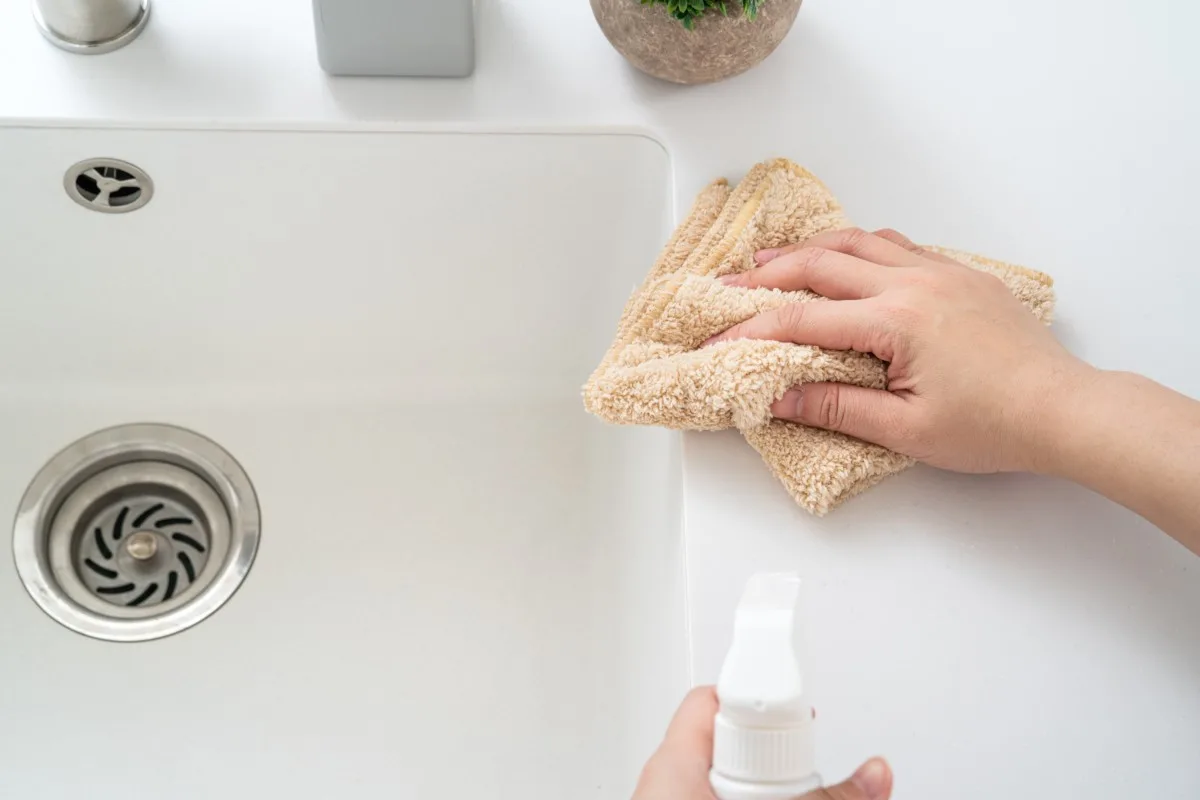
As with any crawling insect infestation, the very first thing to do is clean.
For silverfish in particular, you’ll want to be thorough since they have such a varied diet and can live a long time between meals.
Keep countertops and surfaces wiped down and clear of food particles and dust. Vacuum floors, carpets, and furnishings often. Clean around and underneath appliances. Wash the insides of cupboards, drawers, and pantries.
Pay special attention to dark and humid areas – under the kitchen sink is a prime silverfish hangout, for example. Wipe these areas down and use a vacuum to suck up silverfish eggs that might be nestled in small gaps and crevices.
2. Seal Up Dry Goods

Get into the habit of sealing up your dry foods and pantry goods as soon as you bring them home from the store.
Transfer items packaged in paper or thin plastic – flour, sugar, grains, and the like – into rigid, airtight containers.
You can use glass jars, coffee tins, plastic ice cream tubs, or any other kind of container that can’t be chewed through.
Not only will sealing up your pantry goods cut off a food source for silverfish, it will also help keep other undesirables, like ants and mice, from scrounging around in your cupboards. Tracey explains the proper way to store your most commonly used pantry staples to keep pests out and extend their shelf life.
3. Repair Leaky Faucets and Pipes

A dripping faucet or a slow pipe leak creates the optimal moisture-rich environment for your resident silverfish.
It may not seem like much but even the slowest drips waste a lot of water – 5 drips per minute is half a gallon of water per day or 174 gallons per year. When water gets in places it shouldn’t, it can lead to mold, rot, and other major (and costly!) headaches down the road.
Fixing a drippy tap is an easy DIY – you probably just need to replace the faucet’s inner cartridge.
If you suspect a pipe is leaking and can’t find the source, use a bar of soap to locate the exact spot where water is escaping.
4. Insulate Your Pipes
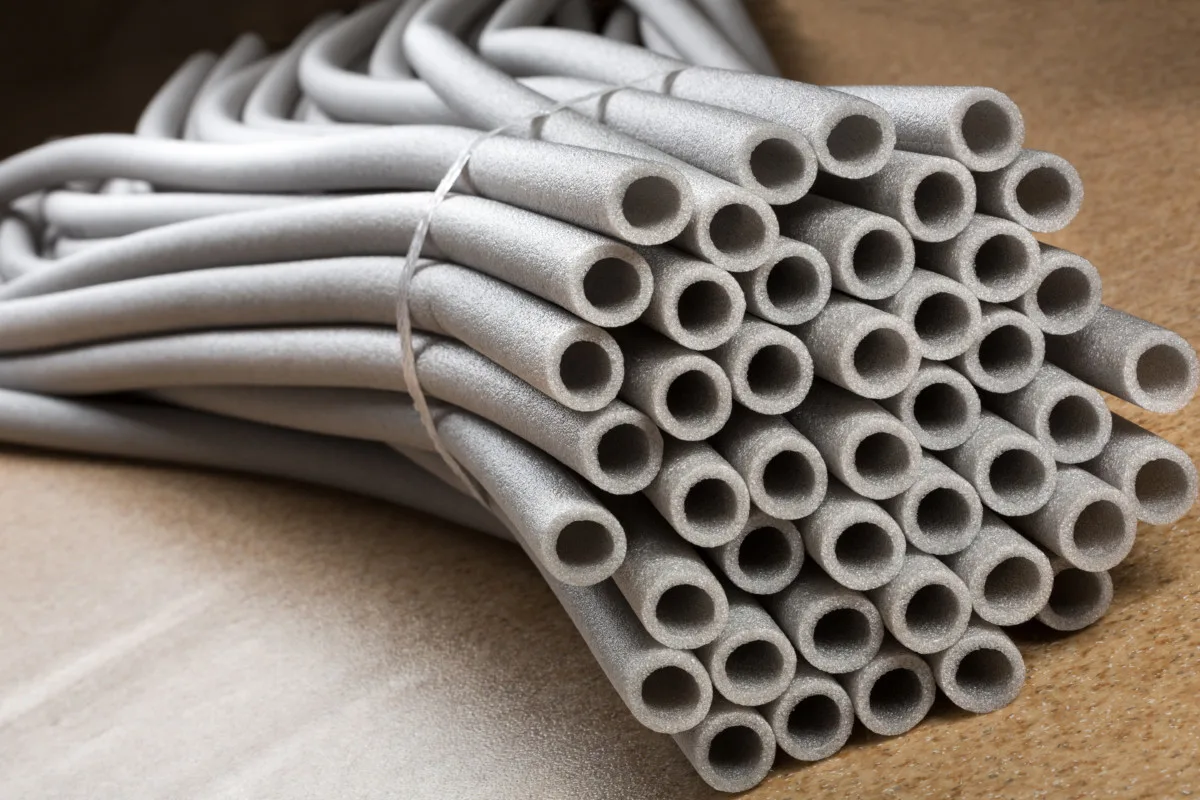
An active leak isn’t the only reason moisture levels might be higher around your plumbing.
Any time the pipes are cooler than the surrounding air, little droplets of condensation will appear over the surface.
Sweating pipes will boost humidity and dampness for silverfish, and if left unchecked, the moisture will slowly corrode the pipe fittings – a true disaster in the making.
Prevent condensation by wrapping up your pipes in insulated tape or foam pipe sleeves.
5. Dehumidify Your Basement

Basements offer the perfect sanctum for silverfish – they tend to be dark, damp, and less heavily trafficked than other areas of the home.
Because silverfish need humidity levels between 75% and 95% in order to survive, investing in a dehumidifier is an excellent way to make your basement less attractive to dampness-loving silverfish.
Depending on your climate, a target of 40% to 60% basement humidity is ideal to prevent silverfish (as well as mold) from thriving.
6. Make Silverfish Traps
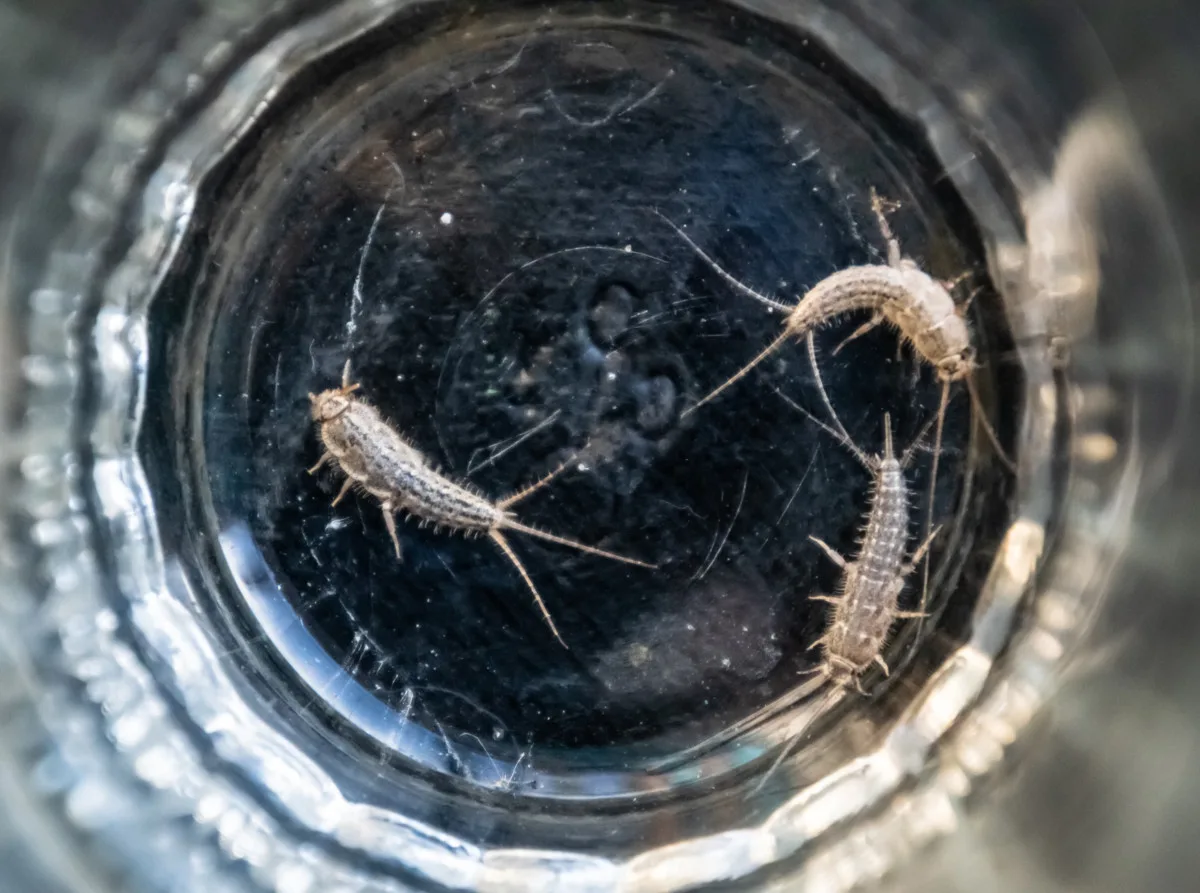
Silverfish have a major weakness: they can’t climb up smooth vertical surfaces. This is why they sometimes become trapped in sink basins and bathtubs, unable to crawl up the slick porcelain.
To make a silverfish trap, you’ll need small glass jars at least 3 inches tall.
Wrap the outside of the jar with masking tape to provide traction for the silverfish to clamber up. Once inside, it won’t be able to climb out. Use a bit of bread as bait.
Place the jar traps in basements, underneath sinks, and any other place you’ve spotted silverfish activity.
7. Use Herbal Deterrents

The scent of herbs and spices is often enough to keep silverfish far and away.
Bay leaves, cinnamon, whole cloves, and rosemary are especially loathsome smells to silverfish. They don’t take kindly to the aroma of cedar shavings either.
Place the herbs in a sachet or sprinkle them loosely in problem spots – the back of cupboards, near plumbing pipes, around bookcases, in the laundry room, and so on.
You can also concoct an herbal spray to repel silverfish from munching on curtains, carpets, wallpaper, furniture, and fabrics. To make, boil a cup of water with 3 to 4 tablespoons of dried herbs. Cover and let the mixture cool. Strain out herbs before transferring the liquid to a spray bottle.
During active infestations, replace these herbs or re-spritz about once a week to keep the scents strong and fresh.
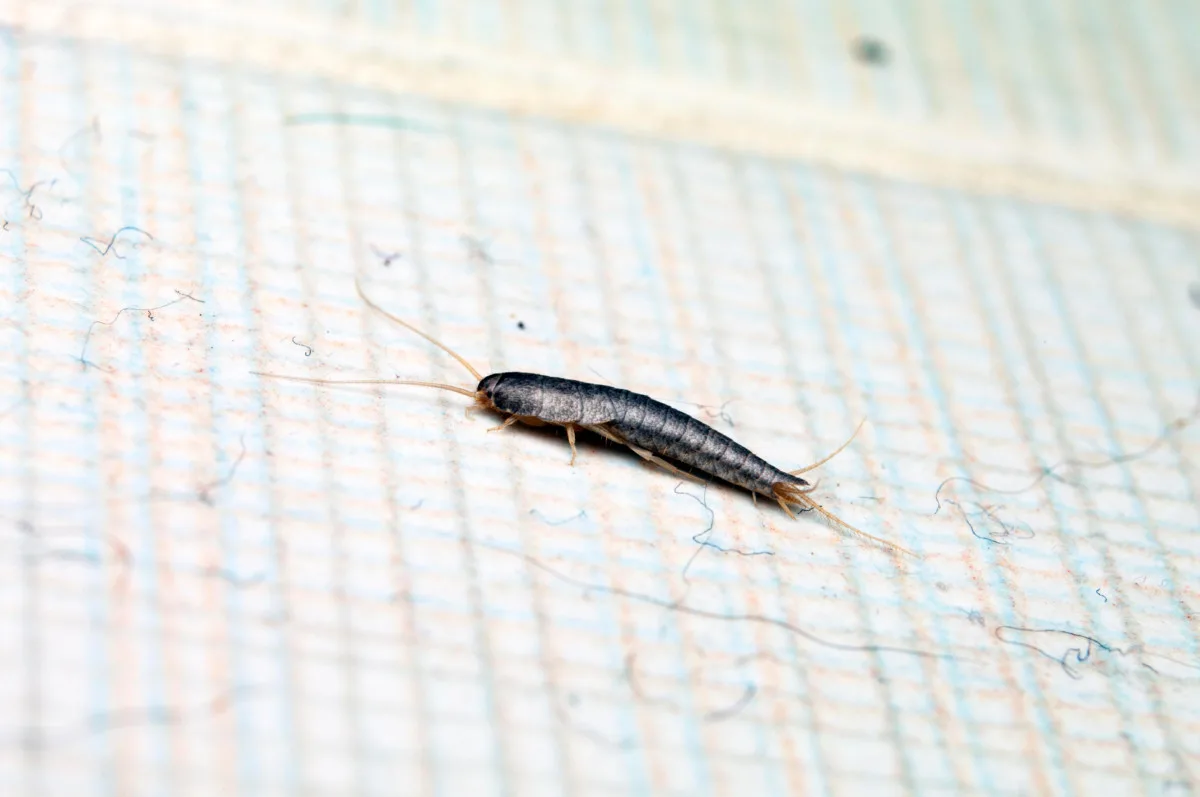
While silverfish aren’t the worst bug that can show up in your home, with these simple measures you can make sure they stay out. There will be no more midnight jump scares in the kitchen for you! Well, at least if you can take care of the spiders too.

Get the famous Rural Sprout newsletter delivered to your inbox.
Including Sunday musings from our editor, Tracey, as well as “What’s Up Wednesday” our roundup of what’s in season and new article updates and alerts.

